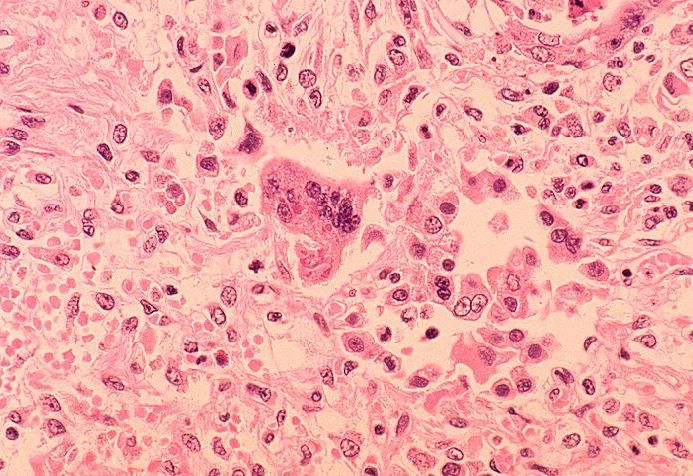- Clinical Technology
- Adult Immunization
- Hepatology
- Pediatric Immunization
- Screening
- Psychiatry
- Allergy
- Women's Health
- Cardiology
- Pediatrics
- Dermatology
- Endocrinology
- Pain Management
- Gastroenterology
- Infectious Disease
- Obesity Medicine
- Rheumatology
- Nephrology
- Neurology
- Pulmonology
Measles Complications in Children: Most to Least Common
Otitis media is the most common related illness. Here, the other 4 in rank order.
Measles pneumonia

In pediatric patients, measles can lead to a number of complications ranging from croup and otitis media to pneumonia and death.
Can you rank the following pediatric complications from most to least common?
Death
Otitis media
Pneumonia
Acute encephalitis
Subacute sclerosing panencephalitis (SSPE)
Answer:
1. Otitis media is the most common.
2. Pneumonia is second most common but ranks first as a cause of death.
3. Death, usually from respiratory or neurologic complications, occurs in 1 to 3 of every 1000 cases reported in the United States. Fatality rates are highest in children under age 5 years and in malnourished or immunocompromised hosts.
4. Acute encephalitis develops in about 1 in every 1000 cases and often results in permanent brain damage.
5. SSPE is a feared but rare complication of measles and occurs months to a decade after the infection. For unknown reasons, some individuals are unable to clear the measles virus. Death occurs 1 to 3 years after the onset of the neurologic symptoms. Fortunately, this was a rare complication occurring in 8 to 9 cases per million. In the 1970’s 40 to 50 cases per year were reported in the US and this number dropped to 1 to 2 cases per year in the 1980’s as the numbers of children having had measles declined dramatically. Risk of developing SSPE was higher in children infected under age 2 years and in males.
Resources on 2014 US Measles Outbreak from the Immunization Action Coalition
MMWR Early Release: Measles-United States, January 1–May 23, 2014
CDC press release: Measles cases in the United States reach 20-year high
Transcript and audio recording of CDC's May 29 telebriefing: CDC to announce record-breaking year in reported cases of measles in the United States
IAC's measles handouts for healthcare professionals, patients, and parents
IAC's Diseases and Vaccines: Measles web section
CDC's Measles (Rubeola) for Healthcare Professionals web section
CDC Feature: Measles: Make Sure Your Child Is Fully Immunized
CDC's Travelers' Health: Measles web section
CDC's Travelers' Health: Measles in the Philippines web section
Bonus question:
Do you know the name of the famous children’s author who lost a 7-year-old daughter to measles in 1962? If you need a hint, think chocolate.
The answer: Roald Dahl, author of the book Charlie and the Chocolate Factory that was later made into the movie Willy Wonka and the Chocolate Factory, had a 7 year old daughter die from acute encephalitis associated with measles in 1962. He subsequently became an advocate for immunization.
References:
American Academy of Pediatrics. Red Book: 2012 Report of the Committee on Infectious Diseases. Pickering LK, ed. 29th ed. Elk Grove Village, IL: American Academy of Pediatrics; 2012.
